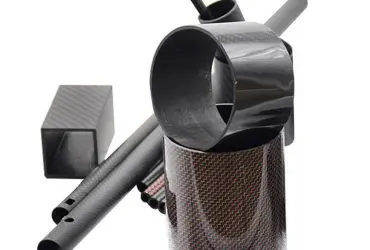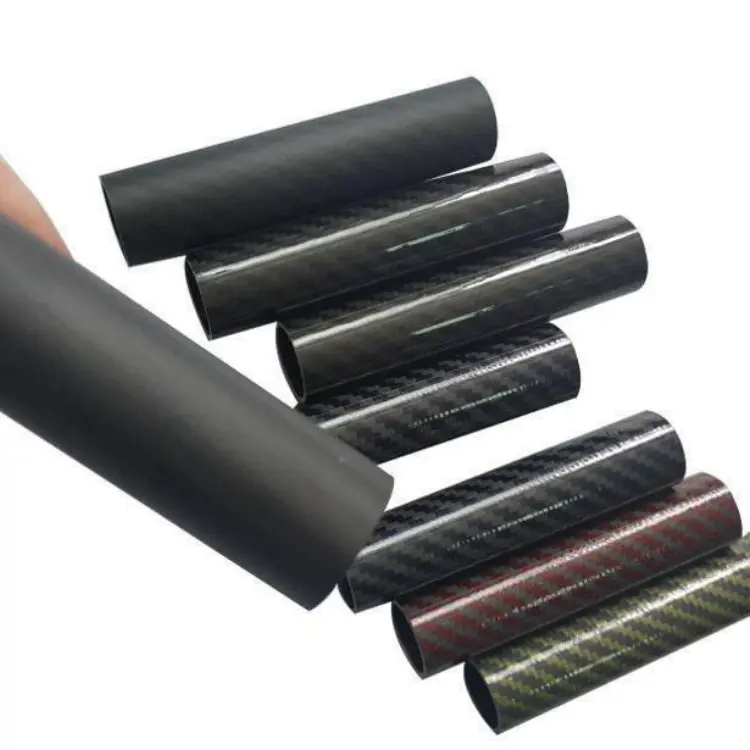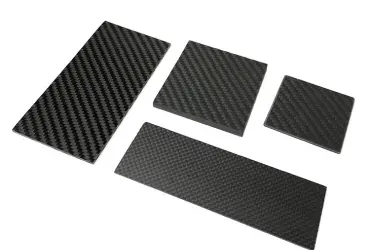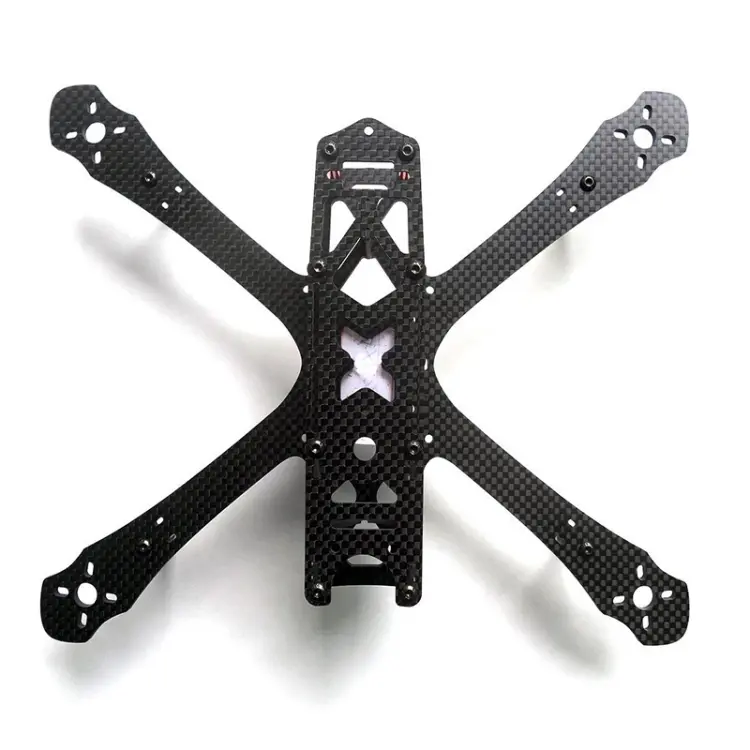What are carbon fiber tubes used for? Carbon fiber tubes are hollow composites made of carbon fiber and resin. They have a bulk density of about 1.6 g/cm³, which is roughly one quarter of steel’s density. Their specific strength is 8 to 10 times greater than that of steel. Their low mass, high specific modulus, and resistance to fatigue and corrosion make them popular. They are now used in aerospace, automotive, medical, construction, sports, and energy sectors. They are an important material. They cut weight, reduce vibration, and boost performance in many industries. This report covers eight verified industrial cases. It shows their real benefits for daily life. It also highlights paths to lower costs, circularity, and embedded intelligence.
1. Representative industry applications
Aerospace: satellite truss
In 2025, they launched the “Jilin-1” Gaofen 03 satellite. It features a 1.2 m carbon fiber tube truss that weighs 680 g. This new design replaces the earlier aluminum one and cuts the mass by 52%. Experts say that reducing mass will cut single-satellite launch costs by about RMB 1.2 million.
UAS (unmanned aerial systems): mapping boom arms.
A Shenzhen mapping hexacopter employs Ø30 mm filament-wound carbon fiber tube booms. The airframe mass dropped by 32%. Battery endurance went up by 18 minutes. Also, high-altitude vibration attenuation improved by 40%.
Automotive: driveshafts and battery enclosures
The BMW i3 features a 1.2 mm carbon fiber battery cover. This tube-and-panel design saves 10 kg compared to aluminum. As a result, it boosts the vehicle’s range by 5%. The NIO ET7 has an optional carbon fiber driveshaft. This cuts weight by 4.2 kg. As a result, the 0–100 km/h acceleration time drops by about 0.08 seconds (estimated).
Medical imaging: CT patient table
A CT made in Shanghai has 640 slices. It features a 2.0 m table made of cantilevered carbon fiber with a sandwich core. X-ray transmission of the table panel is ≥96%. This reduces the patient’s radiation dose by about 15%. At a 1.8 m cantilever, the deflection is less than 0.2 mm. This keeps the slice alignment error below 0.3 mm.
Construction: historic tower and hospital retrofitting
Reinforcement is happening at Beihai Tianhaige Holiday Hotel’s shear-wall openings. Xu Chongzhi’s old home in Shanghai is getting a seismic upgrade. They are using carbon fiber fabric and meshes for this. Structural capacity rose by 30–40%. They cut the construction time in half. The façade thickness only increased by 5 mm, meeting “repair like for like” heritage rules.
Sports: bicycles and tennis rackets
TREK Émonda SLR frames use Ø40–Ø60 mm carbon fiber tubes. They weigh 1.95 kg, which is 1 kg lighter than similar aluminum frames. This saves about 4–5 watts of average power for a Tour rider. HEAD tennis racquets use 50% tube-based carbon fiber spars. This cuts the frame weight to about 220 g. As a result, the initial ball exit velocity increases by around 3%.
Watersports: windsurfing masts
At the 2024 Qingdao International Sailing Week, participants used 4.6 m carbon fiber masts for windsurfing. They are 38% lighter than aluminum. They lower the crosswind capsize moment by 18% and reduce athlete response time by about 0.12 seconds.
Renewable energy: wind turbine spar caps
Vestas V236-15.0 MW blade roots incorporate extruded carbon fiber tube spar caps in the inner 3 m region. Blade mass dropped by about 7 tons, boosting energy conversion efficiency by roughly 1.2%. Over 25 years, each turbine is expected to generate an extra 38 GWh of energy.

2. Measurable impacts on daily life
Mobility: Lighter vehicle bodies and carbon driveshafts can boost BEV single-charge range by about 20–30 km. This helps reduce range anxiety. (Demonstrated via vehicle case studies above).
Health: CT table attenuation cuts patient dose. This reduction is like saving about 1–2 chest X-rays for each patient each year.
Recreation & Safety: Carbon fiber bicycles help amateur riders go 3–4 km farther with the same effort. This means less strain and a lower risk of injury.
Housing: Using carbon fiber fabric to strengthen old residential blocks can boost their seismic rating by one level. This improvement greatly increases safety for residents.
Environment: Better blade efficiency leads to significant CO₂ reduction. One turbine can avoid about 30,000 tons of CO₂ over 25 years.
3. Future development directions
Cost reduction
Large tow sizes (>48K) and high-speed extrusion aim to reduce tube material costs. Target: RMB 80/kg by 2028, bringing carbon fiber tube costs to within ~2× aluminum on a mass-adjusted basis.
Circularity
Remanufactured tubes containing at least 30% recycled carbon fiber (rCF) are commonly used for structural retrofits across Europe. They reduce the cradle-to-gate carbon footprint by about 50%.
Embedded intelligence
Embedding CNT/PDMS conductive layers in tube walls enables sensing of strain, temperature, and damage. Demonstrations target eVTOL boom arms by 2026.
Integrated manufacturing
Thermoplastic winding and in-situ welding simplify co-curing carbon tubes with metal joints. This method cuts vehicle assembly man-hours by about 20%.
Standardization
ISO/TC61 is working on a standard for “Creep and Fatigue Test Methods for Carbon Fiber Tubes.” They plan to publish it in 2027. This standard will help design long-lasting applications in construction and medical devices.
Conclusion
Carbon fiber tubes have evolved. They have shifted from a costly specialty material to a key player in decarbonization. This change boosts performance and safety in many sectors. As low-cost precursor fibers and industrial recycling improve, the technology will grow.
They will use it in:
Electric mobility
Low-altitude aviation
Aging infrastructure repairs
Personalized medical devices
Manufacturers need to invest early in circular supply chains and smart design platforms. This will be key to seizing the next wave of composite value.





